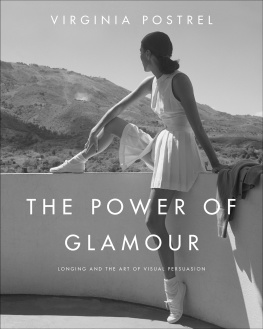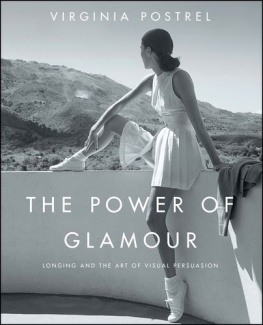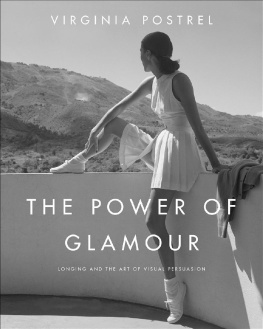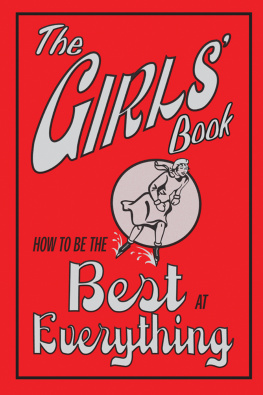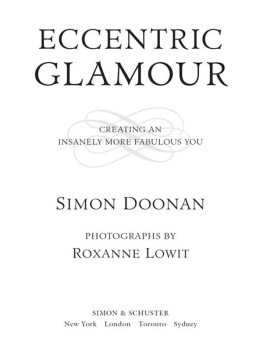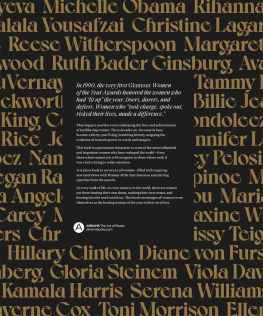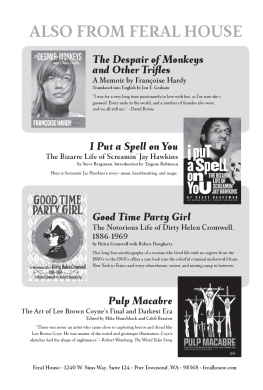We hope you enjoyed reading this Simon & Schuster eBook.
Join our mailing list and get updates on new releases, deals, bonus content and other great books from Simon & Schuster.
C LICK H ERE T O S IGN U P
or visit us online to sign up at
eBookNews.SimonandSchuster.com
Thank you for downloading this Simon & Schuster eBook.
Join our mailing list and get updates on new releases, deals, bonus content and other great books from Simon & Schuster.
C LICK H ERE T O S IGN U P
or visit us online to sign up at
eBookNews.SimonandSchuster.com
Also by Virginia Postrel
THE FUTURE AND ITS ENEMIES
THE SUBSTANCE OF STYLE

Simon & Schuster
1230 Avenue of the Americas
New York, NY 10020
www.SimonandSchuster.com
Copyright 2013 by Virginia Postrel
All rights reserved, including the right to reproduce this book or portions thereof in any form whatsoever. For information, address Simon & Schuster Subsidiary Rights Department, 1230 Avenue of the Americas, New York, NY 10020.
First Simon & Schuster hardcover edition November 2013
SIMON & SCHUSTER and colophon are registered trademarks of Simon & Schuster, Inc.
The Simon & Schuster Speakers Bureau can bring authors to your live event. For more information or to book an event, contact the Simon & Schuster Speakers Bureau at 1-866-248-3049 or visit our website at www.simonspeakers.com.
Designed by Nancy Singer
Jacket design by Christopher Lin
Jacket photograph, Woman wearing tennis outfit, seated on wall, with one leg on top of wall, looking at the mountains behind her , by Toni Frissell (19071988)/Library of Congress
Library of Congress Cataloging-in-Publication Data
Postrel, Virginia I., 1960
The power of glamour : longing and the art of visual persuasion / Virginia Postrel.First [edition].
pages cm
1. Aesthetics. 2. Glamour. I. Title.
BH39.P66925 2013
111'.85dc23
2013026988
ISBN 978-1-4165-6111-8
ISBN 978-1-4767-1887-3 (ebook)
TO STEVEN
CONTENTS
I.
THE NATURE OF GLAMOUR

Toni Frissell Collection, Library of Congress
ONE
THE MAGIC OF GLAMOUR
W hen she was four years old, Michaela DePrince saw a picture that changed her life. Then known as Mabinty Bangura, she was living in an orphanage in Sierra Leone; her father had been murdered during the countrys civil war, and her mother had starved to death. Even among the orphans the little girl was an outcast, deemed an unadoptable devil child because of her rebellious personality and the vitiligo that left white patches on her dark skin.
One day, a discarded Western magazine blew against the orphanages fence, carrying with it an image from a mysterious and distant world. There was a lady on it, she was on her tippy-toes, in this pink, beautiful tutu, DePrince recalls. I had never seen anything like thisa costume that stuck out with glitter on it.... I could just see the beauty in that person and the hope and the love and just everything that I didnt have. She thought, This is what I want to be. Entranced by the photo, the little girl ripped off the magazines cover and hid it in her underwear. Every night she would gaze at it and dream. The image of the graceful, smiling ballerina represented freedom, it represented hope, it represented trying to live a little longer.... Seeing it completely saved me, she says. She yearned to become this exact person.
DePrince was lucky. Adopted by an American couple not long after she found the magazine, she showed her new mother the tattered clipping and began studying ballet when she settled in New Jersey. By age seven she was already dancing en pointe, and in 2012, at seventeen, she joined the Dance Theatre of Harlem as a professional ballerina. I just moved along fast, she says, because I was so determined to be like that person on the magazine.
DePrinces story is not just a heartwarming tale. Its an illustration of a common and powerful phenomenon. The same imaginative process that led an orphaned child to see her ideal self in a photo of a ballerina has sent nations to war and put men on the moon, transformed the landscape and built business empires. It made California the Golden State and Paris the City of Light. Cinema and fashion traffic in it; so do tourism and construction. It sells penthouses and cruises, sports cars and high-heeled shoes, college educations and presidential candidates. It inspires religious vocations and scientific research, suicidal terrorism and show-business dreams. It gives form to desire and substance to hope.
Glamour . The word itself has mystique, spelled even in American English with that exotic u . When we hear glamour, we envision beautiful movie stars in designer gowns or imagine sleek sports cars and the dashing men who drive them. For a moment, we project ourselves into the world they represent, a place in which we, too, are beautiful, admired, graceful, courageous, accomplished, desired, powerful, wealthy, or at ease. Glamour, the fashion writer Alicia Drake observes, offers the implicit promise of a life devoid of mediocrity.
Consider two glamorous images. The first, from a 2008 ad for the Riviera Palm Springs hotel, employs the stereotypical elements of what many people think of as glamour. With their glistening luxury, the black limousine, white satin, and pearl necklaces hark back to the black-and-white films of the 1930s, evoking the styles we now call old Hollywood glamour. Glowing against the desert twilight in her strapless gown and elegant updo, the model contrasts with the dimly lit photographers in their jeans, distancing herself from their workaday world. She is specialthe center of attention and the embodiment of luxury, admiration, and fame. Even as she smiles for the cameras, she remains inaccessible; her cool self-possession is cordoned off from the eager camera flashes by a velvet rope. She doesnt look us in the eye, preserving her mystery and allowing us to enter the photo and imagine ourselves in her place: transformed into stars, living a life of excitement and acclaim in the Palm Springs of legend.
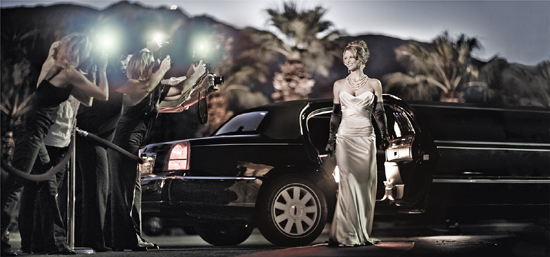
By not looking us in the eye, the model allows us to enter the photo and imagine ourselves in her place: transformed into stars, living a life of excitement and acclaim in the Palm Springs of legend.
Riviera Palm Springs
If the Riviera scene represents popular stereotypes of glamour, Toni Frissells evocative 1947 photograph of a lithe young woman in tennis clothes, at the beginning of this chapter, reminds us that glamours essential elements have nothing to do with red carpets, limousines, or satin gowns. Here we see a more tranquil picture of a desert getaway. Perched gracefully on a curving stucco wall, the model looks not at the viewer but at the hills beyond. Like the Rivieras star, she appears poised and self-contained; this woman, however, appears to be alone. We follow her gaze, trace the light along the top of her extended arm, and imagine the sun on our own skin. We do not know who or where she is, nor do we need to. The mystery again encourages us to project ourselves into the scene, filling in the details with our own desires. Rather than documenting a particular place or fashion moment, the portrait evokes timeless ideals. It embodies youth, beauty, athleticism, self-possession, wealth, leisure, andpublished in a February issue of Harpers Bazaar escape to a benign eternal summer. (No sweat, sunburn, or dehydration here.) This image, too, heightens the viewers yearning for the life it represents: not of fame and excitement in this case but of tranquility and ease. It, too, is glamorous.
Next page
